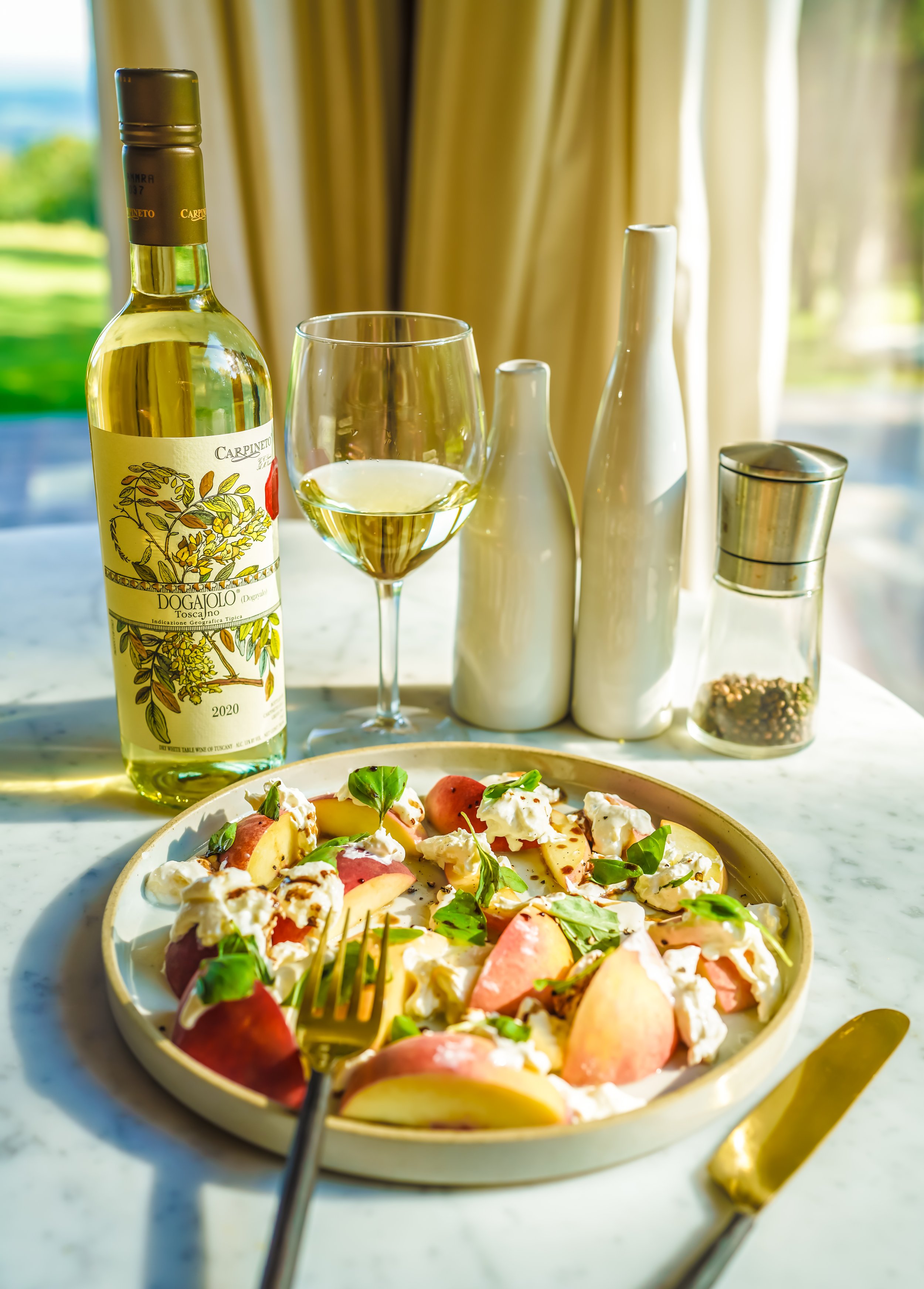3 Affordable Italian Wines You Should Try in 2022
/The Lesser-Known Tuscan Dry White Wine
Carpineto Dogajolo Bianco Toscano
Tuscany, a place of romance, sunshine, art and, of course, wine. The international glory of this region’s red wines often overshadows its equally delicious Whites. In fact, most consumers are probably not familiar with its dry white wines at all.
Let’s demystify. The main white grapes native to region are Trebbiano, Malvasia, Vermentino and Vernaccia. International varieties such as Chardonnay, Sauvignon Blanc, and Viognier are also planted here in relatively small quantities, mainly used in IGT wines. Although Chardonnay has become increasingly popular in recent years, a lot of producers have started making high-quality white blends with Chardonnay. The calcareous sediments make the soil ideal to create mineral-driven white wines. These wines are typically made in an unoaked style, with mainly refreshing primary fruit notes. The result of so many different varieties being planted is the choice of some fantastic blends, meaning that not only is this region starting to create some really fun, inventive, and tasty white wines, but there is also the guarantee to be something to suit everyone’s palate.
The full-bodied Tuscan Reds may be good with steak or lamb rack; salad, shrimp, or seafood pasta will instead call for the crispy, tasty white wines. This bottle of Carpineto Dogajolo Bianco Toscano is a blend of 40% Chardonnay, 30% Grechetto and 30% Sauvignon Blanc. Straw yellow color with slight green hues, it is pleasantly fruity and harmonious. Medium-bodied with notes of ripe peach, green apple, acacia, along with an excellent mineral touch towards the finish. To pair with it, I made a peach burrata salad - the flavors in this salad are simple but complement each other perfectly! You can also try pairing it with some raw oysters, sushi, or spicy Thai food. A fantastic everyday wine for under $15 - add it to your list!
Bring on the Rosé...They are not just for Summer!
Dogajolo Rosato
Many people view Rosé as a Summer-only indulgence due to its fruity, crisp, light nature of them that naturally matches with outdoor cooking during those hot and humid months. Nothing’s wrong with that, but just like Champagne is not just for celebrations or festive occasions, Rosé is also a superb choice of wine all year round.
Rosé is incredibly versatile, both in occasion and in food pairing. They come in all shades - from pale peach-colored to salmon to nearly red, with different aroma profiles, as well as textures and complexities. Some are uncomplicated and refreshing that is perfect for everyday meals or with friends, others are more “serious” in terms of the structure and aging potential. The smooth and bright characteristics of Rosé make them easy to drink by themselves, yet still structured enough to pair with appetizers or even a main course. There is a Rosé for every occasion and for everyone’s palate.
This bottle of Dogajolo Rosato is 100% Sangiovese. It has pink, or maybe blush undertones, opens with bright scents of peach, strawberry, raspberry, and cranberry then leads to vibrant floral aromas. On the palate, it is dry, crisp, refreshing, similar alluring fruit flavors with more rose petals and sweet spice - striking a delightful balance between dryness and fruit-forward flavor. It reminds me of the spirit of this region: warm, friendly, and unpretentious! This is a delicious bottle that can be enjoyed by itself, or perhaps pair it with shrimp salad, asparagus Risotto, or seared scallops - with some grated Parmesan!
Bring on the Rosé for all seasons! They are diverse, and can be poured each step of the way!
Is Chianti Italy’s Most Famous Wine?
Carpineto Chianti Classico Riserva 2016
Chianti is an Italian export as famous as pasta and espresso. It is a wine even most non-wine drinkers have heard of. I mean, who doesn’t like their Italian meal washed down with a delicious Chianti?
Chianti DOCG is a large area that covers much of central Tuscany. It surrounds the smaller Chianti Classico - the heart of the Chianti wine region and the traditional and longest-established viticultural area. It is home to probably the best-known of all Italian wine districts, closely associated with red wines based on Sangiovese. Chianti Classico is the hilly area, with the best wines typically coming from 200–500m above sea level. The elevation contributes to cool nights, lengthening the growing season and promoting full ripeness and high acidity. The wines must have a minimum of 80% Sangiovese, though in practice most wines are around 90% or more Sangiovese with a wide choice of supplementary varieties, both local and international. The Chianti Classico hierarchy has three tiers: Annata, Riserva and Gran Selezione. Any Chianti to be released as Riserva must be aged for two years before release, and Gran Selezione - must be made from a single estate and have been aged for a full 30 months.
There is a range of styles of Chianti Classico, but generally speaking, the typical Chianti Classico has bright ruby color and aromas of cherries and violets, perhaps a hint of earthy spice, supported by racy acidity and well-structured tannins. The recent trend has been towards a more “traditional” style: paler color, sour cherry fruit, restrained new oak.
This Carpineto Chianti Classico Riserva 2016 is a richly textured expression, intense ruby color with slightly garnet reflections. Beautiful nose of raspberry, ripe cherry, blackberry with a hint of floral notes. Warm and generous palate with more thyme, Asian spice, cedar. Excellent structure and balance.





